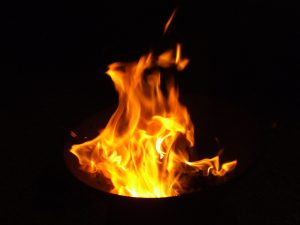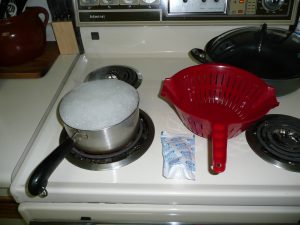 Hey hey we are going to talk about burn injuries to your skin in this post. It’s a follow-up to the radio broadcast of last week where I talked with a burn surgeon. We learned some really important information about what to do when you or a loved one gets burned and we picked up cool lesser known (at least to me) factoids about burns and your skin.
Hey hey we are going to talk about burn injuries to your skin in this post. It’s a follow-up to the radio broadcast of last week where I talked with a burn surgeon. We learned some really important information about what to do when you or a loved one gets burned and we picked up cool lesser known (at least to me) factoids about burns and your skin.
Factoid: Your skin is the largest organ in your body. OK, maybe you knew that one already.
Read on to learn more about:
- Most common causes of burn injuries in children and adults, including a short video of some knuckleheaded guys.
- The classification of burns – that 1st, 2nd, 3rd degree business.
- First aid for burns. What to do if you get burned. And what not to do.
- An insider look at a modern Burn Unit, complete with a slick video.
Dr. Ryan Fey joined me in the WCCO studio last week.  He is a burn and critical care surgeon who helps lead the Burn Unit at HCMC and he specializes in treating serious burns and wounds. You can listen to the podcast of the show on your mobile or computer by clicking the WCCO/Healthy Matters logo at the right.
He is a burn and critical care surgeon who helps lead the Burn Unit at HCMC and he specializes in treating serious burns and wounds. You can listen to the podcast of the show on your mobile or computer by clicking the WCCO/Healthy Matters logo at the right.

Dr. Ryan Fey
Kids and scalding water
Any guesses as to how small children most frequently get burned?
Factoid: Burns in small children are most often caused by scalding water.

There are two things I want to point out about this photo:
- Notice where the handle is on that pot of boiling water? It is in perfect position for a small hand to reach up and grab it. So easy to envision a small child dumping that scalding water right on his or her head. Makes any parent shiver.
- Notice the pouch in the middle? It is the cheese mix from my favorite childhood food – what we at home call “Blue Box” mac and cheese. Ah, the memories. The only way I get it now is if I sneak it into the grocery cart as my wife won’t consent to even be seen buying the stuff!
OK, pay attention to the first point above and you can think what you want about my culinary preferences from the second point.
The message is that kids most often get burned from hot water. Not just the stove, either. Dr. Fey mentioned on the show that even a bathtub full of water that is too hot can burn the tender skin of a child.
So another factoid: make sure your hot water heater is set to 120 degrees or less. And check the water in the tub before putting your child anywhere near that water. The Consumer Product Safety Commission has a good tip sheet for more guidance. Did you know that adults can get a third-degree burn after just 2 seconds of exposure to water that is heated to 150 degrees?
Middle-aged men and fire
Here’s a shocker of a factoid: men (in their 20s, 30s, and 40s) are most often burned by fire, often with the ill-advised use of accelerants.
Yes, Dudes, we’re talking to you. Pouring any kind of fuel on a fire, or spraying any accelerant on coals to get them burning, or any unsafe use of solvents (gasoline, paint thinner, etc) is asking for trouble. Check out this light-hearted brief video from people with cool accents:
Dr. Fey confirmed on the radio broadcast that his HCMC Burn Unit does in fact see mostly men among its adult burn patients. Guys, practice some safety and make smart decisions, OK?
First degree, second degree, third degree
Let’s get to some burn basics. We all are at least a little familiar with the 1st, 2nd, 3rd degree burn system, but what do they really mean? Dr. Fey had one of the better descriptions of these classifications on the air which you can hear on the podcast (the link is above).
Here is a pretty good diagram to illustrate:
![By Martin Black (ThingLink) [CC BY-SA 4.0 (http://creativecommons.org/licenses/by-sa/4.0)], via Wikimedia Commons](https://healthymatters.org/wp-content/uploads/2016/10/SkinBurn-300x240.png)
By Martin Black (ThingLink) [CC BY-SA 4.0 (http://creativecommons.org/licenses/by-sa/4.0)], via Wikimedia Commons
First degree burns (redness, swelling, pain) involve just the epidermis, like a sunburn. These outermost layer of skin cells are constantly growing, sloughing off, and replacing themselves. That is part of normal skin physiology, but it also means that these types of burns heal on their own in a few days. Though they still hurt a lot!
Second degree burns (blotchy redness and white patches, pain, blisters) involve not only the superficial skin cells but also the deeper tissues of the dermis layer. It is from this layer of skin where the new growth occurs since it’s where the glands and follicles and such are located. The new growth comes up from below. When the burn goes to this depth, blistering can occur and the healing can take longer, but it still may heal on its own.
Third degree burns (entire skin affected, may be black, fat and muscles exposed) go all the way through the entire thickness of the skin down to the subcutaneous tissues (fat and muscle). These are the very serious burns that often require surgery (e.g. skin grafting). Since the dermis and all its new growth-generating potential is completely lost in a 3rd degree, there is no mechanism for the skin to heal itself in the usual fashion (from below). Instead, in the absence of a skin graft surgery, the skin heals as best it can from the sides with fibrous scarring and bands. Not ideal.
First aid for burns
For minor burns, here’s another factoid. Run cool water over a burn, but do not put ice on it. This is a case of “a little coolness is good (cool water) but a lot of cold is bad (ice).” I didn’t know this, but it makes some sense. You want to slow down and stop the ongoing heat damage to your skin, so if you burn yourself at home, cool it off with water. But you don’t want to freeze the tissue as that causes even more damage – so don’t put ice on a new burn.
You can just leave blisters alone or maybe loosely cover them with a gauze dressing. You don’t need to pop them. For pain, take some ibuprofen and perhaps rub some aloe lotion on the burn.
Of course, before you do any of this, remove yourself from the source of the burn. Seems obvious, but there you go.
For bigger, deeper burns (more serious burns) or even minor burns that either a) cover a large part of the body or b) are on a sensitive place like the hands or face you should call 911. You should loosely cover the burned area, hopefully with a cool and moist wrap, and get to a doctor. Do not immerse the area in cool water as body heat can be rapidly lost and lead to dangerous hypothermia. Your first-aid goal is basically to get professional help right away. Major burns are life-threatening and not to be treated at home!
A modern Burn Center
Dr. Fey is part of a Verified Burn Center at Hennepin County Medical Center. A verified center is not as common as you may think. Here is the entire list of verified burn centers in the United States and Canada. North Dakota, South Dakota, parts of Montana – many of you get flown to HCMC and land on our roof.
Burn care requires expertise in surgery, in wound care, in infection control. It requires social services, rehabilitation services, and expert specialized nursing. It requires ability to care for a burn patient from moment of injury all the way through recovery and returning back home. It should be able to provide wound care in the clinic as well as critical care in the ICU.
The HCMC Burn Center is just such a center. Rather than me tout it, please watch this 5-minute video.
I’ll leave you with that. Thanks for checking us out – and be safe with your skin. As your mother said . . . “Don’t play with fire!”
As always if you like what you see here, please subscribe by e-mail to MyHealthyMatters.org and follow me on Twitter @DrDavidHilden. Easy to do (below or at the top right of this screen)! You won’t get jillions of unwanted messages in your in-box, just an occasional posting from me. Love having you along!
And don’t forget the Twitter chat about breast cancer screening with Dr. Tony Severt. October 27, noon – 1:00 p.m. Questions and comments answered LIVE, just put @DrDavidHilden in your tweet and the hashtag #YesMAMM
David
